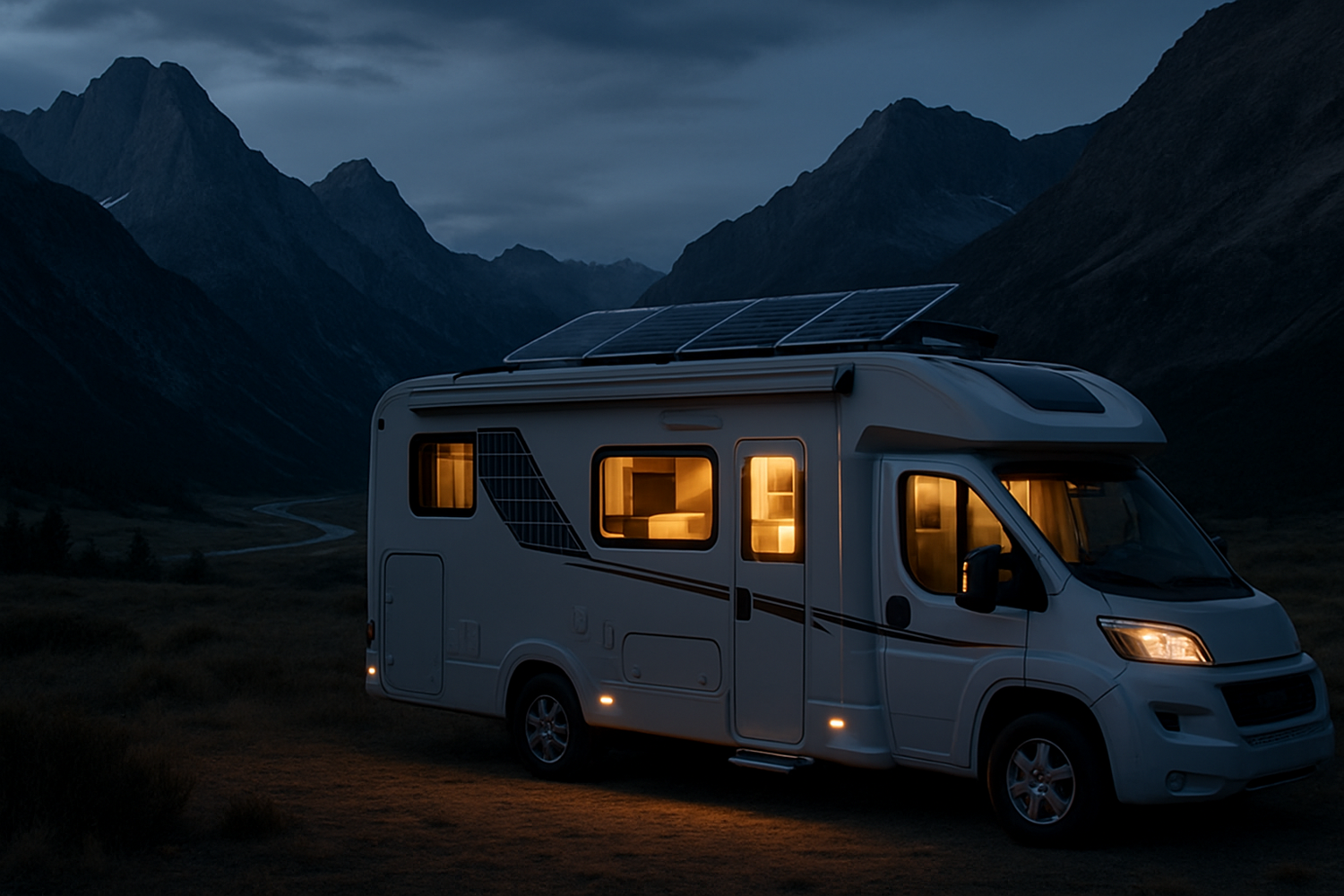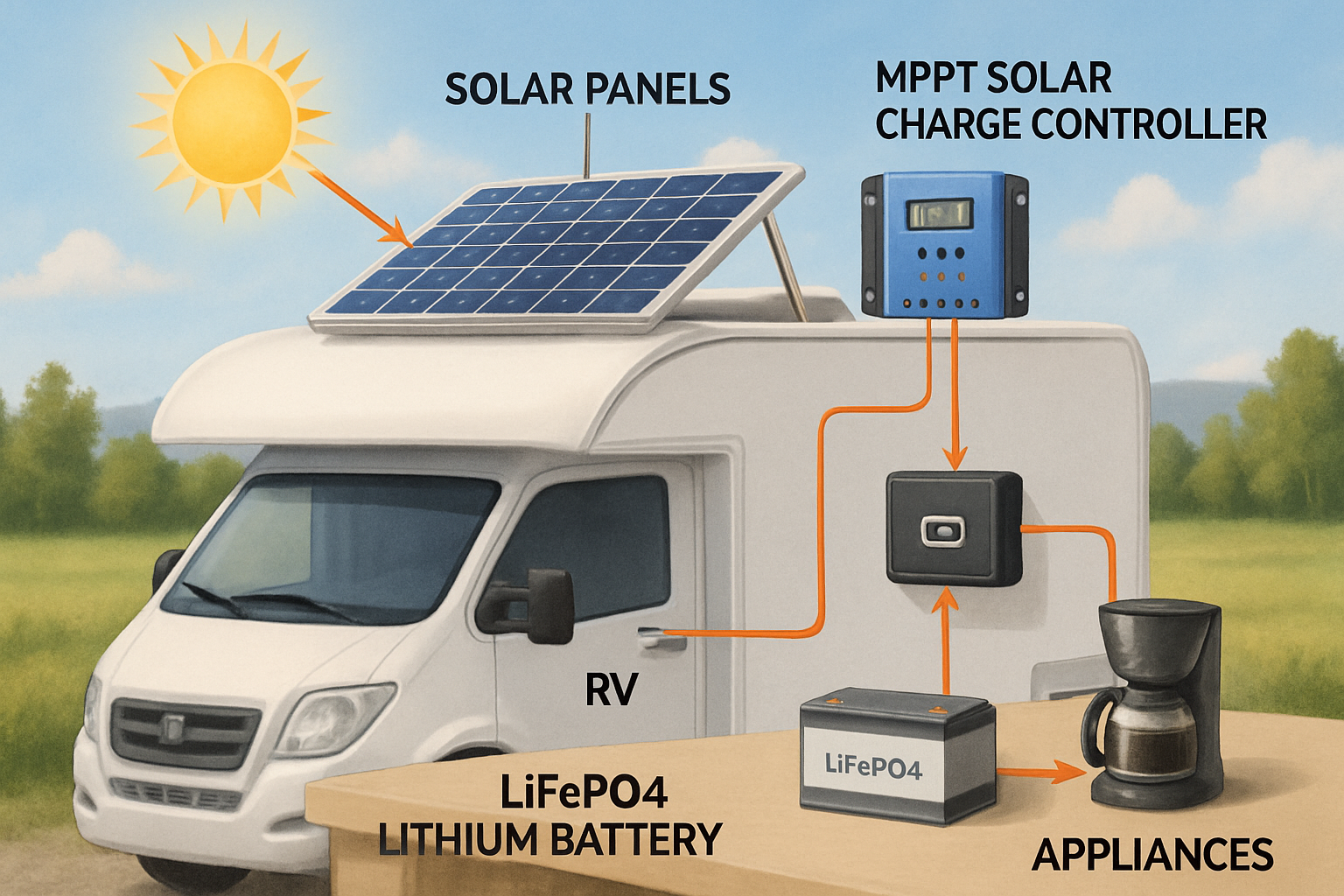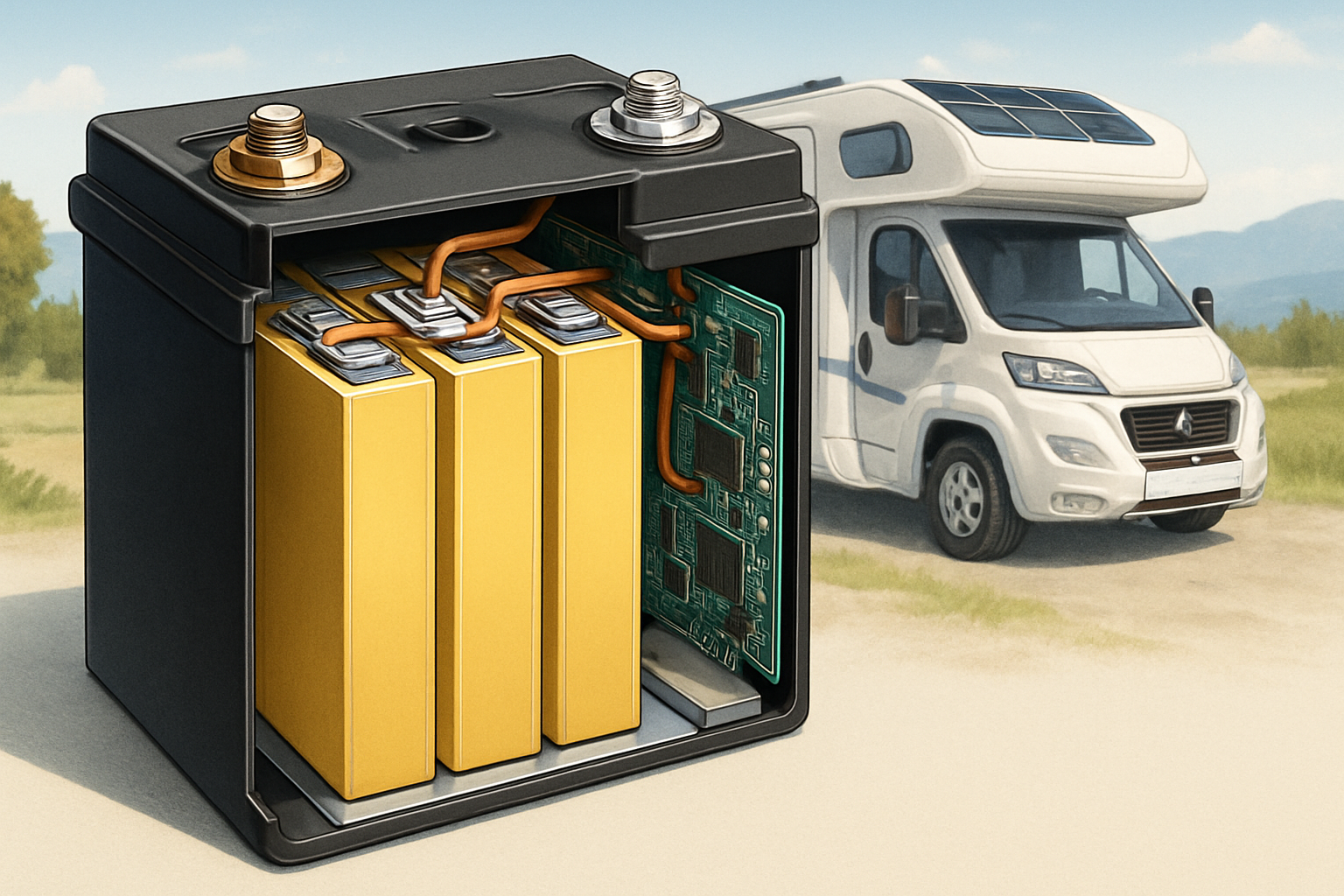The allure of the open road and the independence of off-grid travel are powerful motivators for RV enthusiasts. Central to this freedom is a reliable power source that can keep your essentials running without being tethered to a campground hookup. A 12V 100Ah lithium battery has become the cornerstone of modern RV solar power systems, offering a compact, powerful, and long-lasting energy solution. This piece explains its capabilities, how it integrates with solar charging, and the best ways to maximize its performance for true energy independence.
Why a 12V 100Ah Lithium Battery is the Core of Your Off-Grid System
The move from traditional batteries to lithium, specifically Lithium Iron Phosphate (LiFePO4), marks a significant technological leap for mobile power. This chemistry is not just an incremental improvement; it fundamentally changes how you can manage and use energy on the road.
Superior Energy Density and Efficiency
LiFePO4 batteries offer a much higher energy density compared to their lead-acid counterparts. This means they pack more power into a smaller and lighter package. For an RV, where every pound and inch of space matters, this is a critical advantage. A 100Ah lithium battery can be up to 70% lighter than a lead-acid battery of similar capacity. Furthermore, they provide nearly 100% of their rated capacity, a stark contrast to the roughly 50% usable capacity of traditional deep cycle batteries.
| Feature | 100Ah LiFePO4 Battery | 100Ah Lead-Acid Battery |
|---|---|---|
| Usable Capacity (DoD) | ~100% (100Ah) | ~50% (50Ah) |
| Average Weight | 25-30 lbs | 60-70 lbs |
| Cycle Life | 3,000-5,000+ cycles | 300-500 cycles |
| Maintenance | None | Regular (e.g., checking water levels) |
Longevity and Lifecycle Value
While the initial cost of a lithium battery is higher, its extended lifespan presents a better long-term value. A LiFePO4 battery can endure thousands of charge cycles, often lasting a decade or more, whereas a lead-acid battery might need replacement every few years. This durability, combined with their inherent safety and thermal stability, makes the 12V 100Ah lithium battery a reliable and sound investment for any serious RVer.
Powering Your Adventures: What Can a 100Ah Lithium Battery Run?
A 12V 100Ah lithium battery provides approximately 1280 Watt-hours (Wh) of energy (12.8V x 100Ah). This is a substantial amount of power that can comfortably run a variety of essential off-grid appliances.
Calculating Your Daily Energy Needs
To determine if a 100Ah battery is right for you, start by conducting a simple energy audit. List your DC appliances, their power draw in watts, and the number of hours you expect to use them daily. For example:
- LED Lights (4 bulbs, 5W each): 20W x 4 hours = 80 Wh
- High-Efficiency 12V Fridge (45W, 30% duty cycle): 45W x 24 hours x 0.3 = 324 Wh
- Water Pump (50W): 50W x 0.5 hours = 25 Wh
- Laptop Charging (60W): 60W x 2 hours = 120 Wh
- Phone Charging (2 devices, 10W each): 20W x 2 hours = 40 Wh
In this scenario, the total daily consumption is 589 Wh, well within the capacity of a 100Ah lithium battery.
Real-World Application Examples
With a fully charged 100Ah lithium battery, you can spend a weekend off-grid with confidence. It can power your lights through the evening, keep your food fresh in an efficient 12V refrigerator, run a ceiling fan for comfort, and keep all your personal electronics charged. For those who work remotely, it provides enough power to run a laptop and mobile internet hotspot for a full workday.
Integrating Your Battery with an RV Solar Charging System
To achieve true off-grid freedom, your 12V 100Ah lithium battery needs a way to recharge. A solar charging system is the perfect partner, providing clean, quiet, and reliable energy wherever the sun shines.
Key Components for a Balanced System
A well-functioning RV solar charging system consists of a few essential components working in harmony:
- Solar Panels: For a 100Ah lithium battery, a solar array between 200W and 400W is typically recommended. This range ensures you can fully recharge your battery in a single day of good sunlight.
- Solar Charge Controller: An MPPT (Maximum Power Point Tracking) charge controller is highly recommended for lithium batteries. It is significantly more efficient than a PWM controller, ensuring you capture as much solar energy as possible.
- Inverter: If you need to power AC appliances (like a microwave or standard outlets), you will need an inverter to convert the battery's DC power to AC power. Choose a size based on the maximum wattage of the appliances you plan to run simultaneously.
The Charging Process Explained
During daylight hours, your solar panels convert sunlight into electricity. This power is routed through the charge controller, which regulates the voltage and current to safely and efficiently charge your 12V 100Ah lithium battery. According to a report from the International Renewable Energy Agency (IRENA), smart charging principles are vital for managing energy flow and preserving battery health, a concept that applies equally to stationary and mobile storage. Understanding your system’s capabilities is key, and a deeper look into solar storage performance reveals how factors like charge rate and temperature affect overall efficiency.
Maximizing Performance and Ensuring Longevity
A quality LiFePO4 battery is a durable piece of equipment, but following best practices for its management and care will ensure you get the most out of your investment.
Proper Management with a Battery Management System (BMS)
Virtually all modern 12V 100Ah lithium batteries come with an integrated Battery Management System (BMS). This internal electronic system is the brain of the battery, protecting it from common issues like overcharging, over-discharging, excessive temperatures, and short circuits. The BMS ensures each cell within the battery remains balanced, which is crucial for maintaining capacity and extending its lifespan.
Installation and Maintenance Best Practices
Proper installation is key to a safe and efficient system. Always ensure the battery is securely mounted in a location with adequate ventilation. Use the correct gauge of wiring to handle the current, and ensure all connections are tight. One of the major benefits of LiFePO4 technology is that it is virtually maintenance-free. Unlike lead-acid batteries, there is no need to check water levels or perform equalization charges. The U.S. Department of Energy's Office of Energy Efficiency and Renewable Energy has highlighted numerous success stories of off-grid solar providing reliable power, underscoring the technology's readiness for widespread use.
A Smart Investment in Energy Independence
Choosing a 12V 100Ah lithium battery for your RV solar charging system is more than just an equipment upgrade; it's an investment in freedom. Its lightweight design, deep usable capacity, and exceptionally long life provide unmatched performance and value. This powerful yet compact energy source empowers you to explore further, stay longer, and enjoy the full experience of off-grid travel with a reliable and self-sustaining power system. As the International Energy Agency notes in its Solar Energy Perspectives report, the falling costs and improving technologies are making solar a cornerstone of future energy systems, both large and small.
Frequently Asked Questions
Can I replace my lead-acid RV battery directly with a 100Ah lithium battery?
In many cases, yes. However, it is critical to verify that your RV's onboard converter/charger and any alternator charging systems are compatible with LiFePO4 batteries. Using a charger without a specific lithium profile may not fully charge the battery and could reduce its performance over time.
How long will a 12V 100Ah lithium battery last on a single charge?
This depends entirely on your power consumption. For a minimalist setup running only LED lights and a water pump, it could last for several days. For a more moderate user running a fridge and charging electronics, it will typically provide power for one to three days.
How many solar panels do I need for a 100Ah battery?
A solar array of 200 to 400 watts is generally recommended. This provides sufficient power to recharge the battery from 50% to full in a single day of good sun exposure, ensuring you are ready for the night ahead.
Is a 100Ah lithium battery safe for my RV?
Yes, LiFePO4 is considered one of the safest and most stable lithium battery chemistries. It is not prone to thermal runaway like other lithium-ion chemistries. The integrated BMS provides an essential layer of protection against potential faults, making it a very safe option for mobile applications.





Leave a comment
All comments are moderated before being published.
This site is protected by hCaptcha and the hCaptcha Privacy Policy and Terms of Service apply.